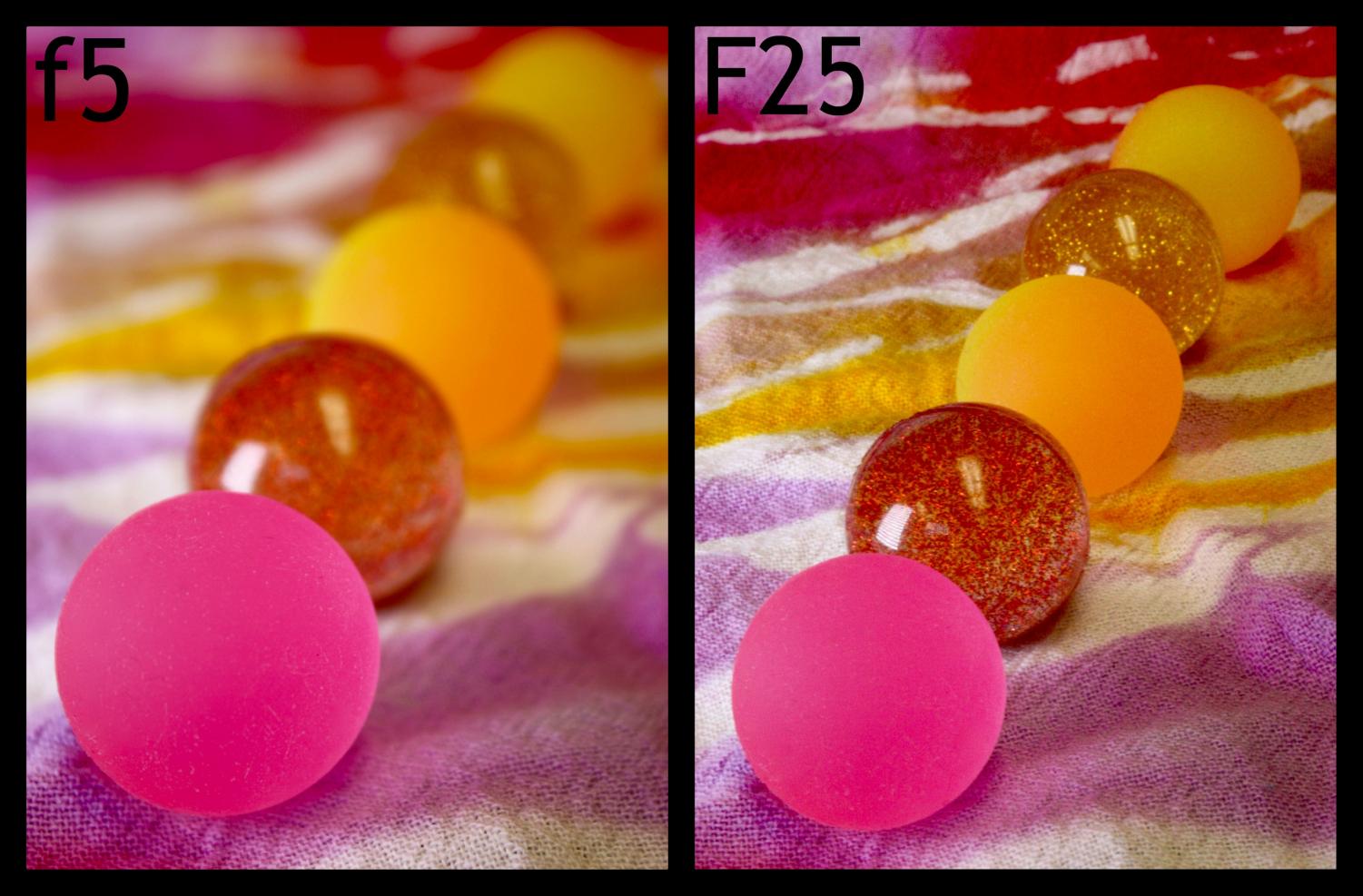Aperture Basics – DSLR Tutorial
When learning how to operate a DSLR, it is important to get a grasp on three critical components to how a camera works; Aperture, ISO, and Shutter Speed. In this mini-tutorial, we will cover aperture and ways to practice controlling it.
Aperture is the opening in a lens that allows light to enter the camera. It is measured in f-stops and can add depth and dimension to images by controlling the image’s depth of field.
Depth of field is how in focus a photograph is. Images can have a shallow depth of field, where the background and/or foreground is completely out of focus, or they can have a full depth of field, where everything is sharp from the foreground to the background.

One trick to remember when it comes to the relationship between f-stops and depth of field is this: a large aperture number (which is a smaller opening) results in a photograph with a full depth of field. Take a moment and think of an Ansel Adams’ landscape or any scene where the foreground, middle ground, and background are all in focus; that is full depth of field.
On the other hand, shallow depth of field is a smaller aperture number (which is a bigger opening). This is an excellent setting for portraits, or photos of objects where you as the photographer want to isolate the subject from the background or foreground.
This video clip by our friends at Canon Australia explains depth of field: https://youtu.be/l3zdybilbCY
One way to experiment with aperture is by setting your camera on AV (Aperture Value mode) and adjusting the f-stop to create a variety of images. It’s also interesting to experiment with pre-set modes that control aperture such as landscape, portrait, and macro.
This is a good site to visit if you do not have enough cameras for everyone to access one: http://www.canonoutsideofauto.ca/play/
Note that once you gain a greater understanding of all three components (ISO, Aperture, and Shutter Speed), that is a good opportunity to venture into Manual mode. Once in Manual mode, you will soon learn that in addition to depth of field, aperture also alters the exposure of images by making them brighter or darker.
As the aperture changes in size, it impacts the overall amount of light that reaches the camera sensor. The brightness of your image is impacted by the aperture you select, along with any adjustments to the ISO and shutter speed that you select while in manual mode.
It is critical to not just think of Aperture alone when creating images. ISO and Shutter Speed must be taken into consideration as well. We will look at ISO and Shutter Speed in an upcoming mini-tutorial here at SchoolJournalism.



Paul Ruez • Jan 8, 2023 at 9:34 pm
Please tell us where we can find a working link for this
canonoutsideofauto.
School Journalism • Feb 7, 2023 at 2:24 pm
I am researching and it would appear the Canon Camera Simulator is offline. If it is not put back on line soon, I may have to remove that link/resource. If you find another online simulator that works well, please share here.